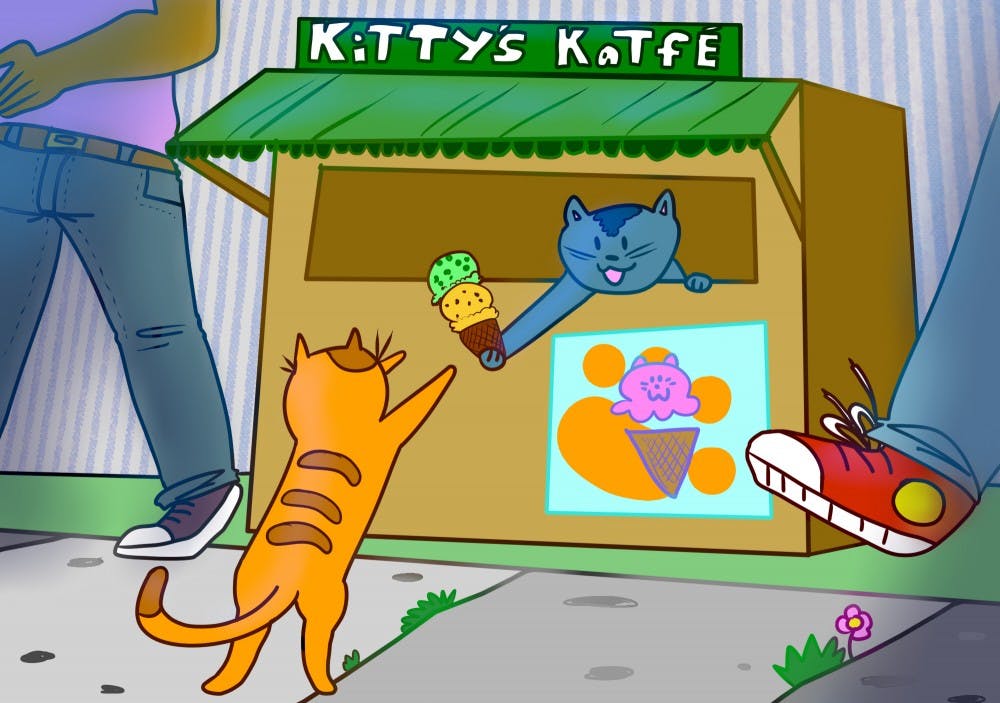For more than a decade, stray cats on the ASU Tempe campus have found an ally in Mildcats at ASU, a group that aims to keep the campus' stray cat population under control by providing care and nourishment to the furry tenants.
Mildcats set out to maintain the cat colonies at ASU in 2002. The nonprofit organization provides "trap-neuter-return" services on campus, which advocates say are a humane way to deal with strays. The organization's members give water and food to the cats at various locations and help them get adopted out to loving homes.
Carmen Febus, president of Mildcats and a research technician in nutrition, started working with the organization in 2004. She said she has always been a cat person and came to Mildcats after seeing a classified ad in The State Press.
“One day a bunch of the cats went missing, and we found out that ASU was trapping cats and removing them,” Febus said. “A group got together and decided to go talk to ASU, and it took a long time, and they finally got a protocol.”
If a new cat is seen on campus, Mildcats first assesses whether the cat is friendly or feral. Friendly cats, Febus said, are trapped, neutered and put into a foster home to be adopted to forever homes. Feral cats are trapped, sterilized, ear tipped, given vaccines and returned to campus.
Febus estimated there are 50 to 60 cats currently living on the Tempe campus, but that number is on the rise because a growing number of people are abandoning cats at Wells Fargo Arena.
“Most of the new cats that come in are strays who walk in or (are from) people who actually dump cats,” she said. “Since last year, I’ve had at least six or seven cats dumped (at Wells Fargo).”
The organization runs on donations, and the volunteer feeders spend their own money on cat food. Febus said she wants students to understand and value her team's work.
“I go to work (downtown) every day," she said. "I live in Mesa, so I take the light rail home, take care of my own animals, and then I go back to campus to feed.”
Some students, she said, are very outspoken about their hatred of cats on campus.
“There was a time where it was scary to go feed because we had a lot of people that were really really mean,” she said. “It’s very disheartening when you go to a feeding site and have people harass you.”
Erin Luntey, an ASU catalog specialist who has volunteered with Mildcats for 11 years, said while she hasn’t experienced student harassment, she does wish that students knew the program existed. If there was greater awareness about the group, students might stop feeding the strays improper food, she said.
Luntey, like other volunteers, pays for food out of pocket each week, and she said she doesn’t even keep track of the costs anymore.
“I don’t expect Mildcats to reimburse me, it’s something I enjoy doing,” she said. “I love doing it.”
ASU business operations specialist Cissy Longmore, another feeder who has worked with Mildcats since the organization's inception, said she estimates she spends $25 a week on food for the 10 cats at her four to five feeding sites.
Over the years, she said she’s taken in 10 to 15 stray cats and always ended up keeping them.
“My husband kind of introduced me to the joys of cats, so I’ve always had a few,” she said. “I’m probably what’s known as a failed foster because when they come into my home I bond too hard and it’s really hard for me to give them up.”
But Longmore, like Febus and Luntey, finds joy in taking care of her cat colonies and doesn’t mind spending time and money on her feline friends.
“I think you’ll find that most caretakers for colonies become quite bonded with their cats,” she said. “It’s definitely a labor of love.”
Reach the reporter at mlutesad@asu.edu or follow @mackinleyjade on Twitter.
Like The State Press on Facebook and follow @statepress on Twitter.




